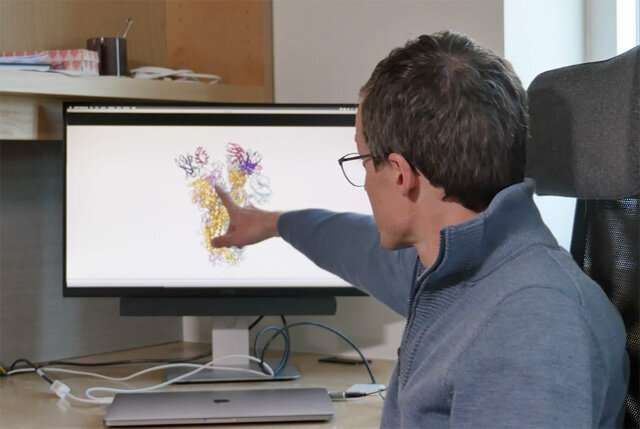

An antibody first identified in a blood sample from a patient who recovered from Severe Acute Respiratory Syndrome in 2003 inhibits related coronaviruses, including the cause of COVID-19.
The antibody, called S309, is now on a fast-track development and testing path at Vir Biotechnology in the next step toward possible clinical trials.
Laboratory research findings on the S309 antibody are reported in the May 18 edition of Nature. The title of the paper is: “Cross-neutralization of SARS-CoV and SARS-CoV2 by a human monoclonal antibody”.
The senior authors on the paper are David Veesler, assistant professor of biochemistry at the University of Washington School of Medicine, and Davide Corti of Humabs Biomed SA, a subsidiary of Vir.
The lead authors are Dora Pinto and Martina Beltramello of Humabs, as well as Young-Jun Park and Lexi Walls, research scientists in the Veesler lab, which for several years has been studying the structure and function of the infection mechanisms on a variety of coronaviruses.
“We still need to show that this antibody is protective in living systems, which has not yet been done,” Veesler said.
“Right now there are no approved tools or licensed therapeutics proven to fight against the coronavirus that causes COVID-19,” he added. If the antibody is shown to work against the novel coronavirus in people, it could become part of the pandemic armamentarium.
Veesler said that his lab is not the only one seeking neutralizing antibodies for COVID 19 treatment. What makes this antibody different is that its search did not take place in people who had COVID-19, but in someone who had been infected 17 years ago during a SARS epidemic.
“This is what allowed us to move so fast compared to other groups,” Veesler said.
The scientists identified several monoclonal antibodies of interest from memory B cells of the SARS survivor. Memory B cells form following an infectious illness. Their lineage can last, sometimes for life. They usually remember a pathogen, or one similar to it, that the body has ousted in the past, and launch an antibody defense against a re-infection.
Several of the antibodies from the SARS survivor’s memory B cells are directed at a protein structure on coronaviruses. This structure is critical to the coronaviruses’ ability to recognize a receptor on a cell, fuse to it, and inject their genetic material into the cell. This infectivity machinery is located in the spikes that crown the coronavirus.
The S309 antibody is particularly potent at targeting and disabling the spike protein that promotes the coronavirus entry into cells. It was able to neutralize SARS CoV-2 by engaging with a section of the spike protein nearby the attachment site to the host cell.
Through their cryo-electronmicroscopy studies and binding assays, the researchers learned that the S309 antibody recognizes a binding site on the coronavirus that is conserved across many sarbocoviruses, not just the SARS and COVID-19 viruses. That is probably why this antibody, instead of being single-minded, is able to act against related coronaviruses.
Combining the S309 antibody with other, though weaker, antibodies identified in the recovered SARS patient enhanced the neutralization of the COVID-19 coronavirus.
This multiple antibody cocktail approach might help limit the coronavirus’ ability to form mutants capable of escaping a single-ingredient antibody treatment, according to the researchers.
Source: Read Full Article